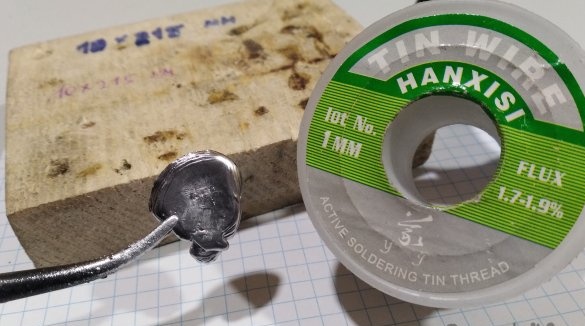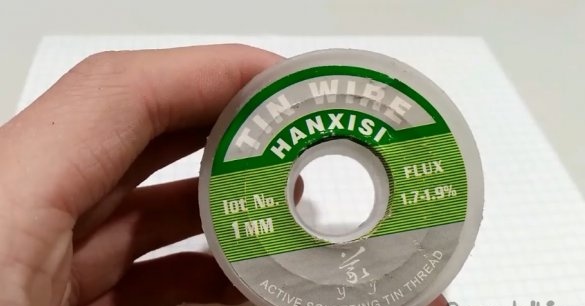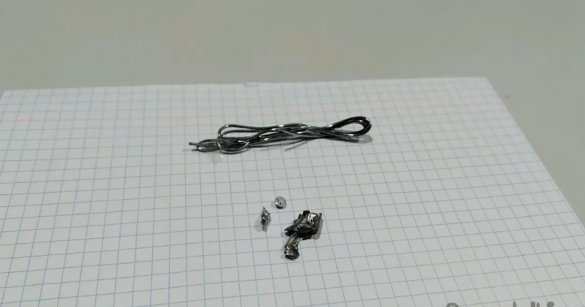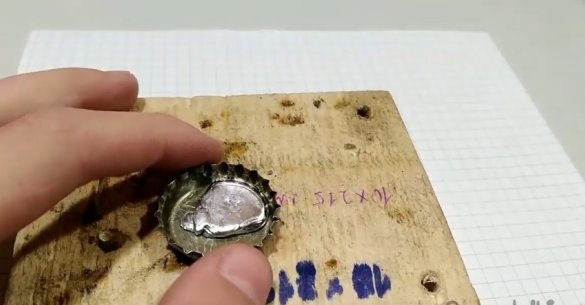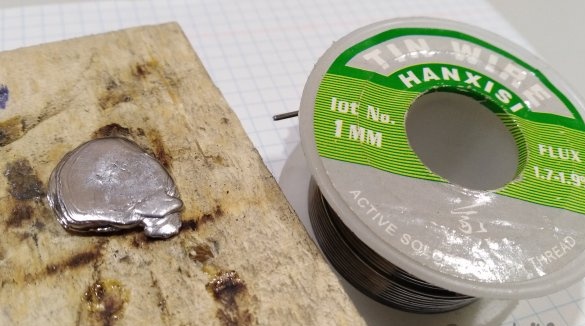Hello! Today I found a solution to the most popular problem, this is Chinese refractory solder. The difference in it is that it has a small amount of lead, or no lead at all. Of course there is the simplest solution to either solder with a powerful soldering iron or throw it out altogether. Well, you can spend a little time and slightly improve the solder. Let's start.
We have this kind of solder that I searched for a very long time on the Internet, found but only on one site and even without any information, so we will experiment with adding lead to an unknown composition. I have about 80 grams of solder so we need to add 20 grams of lead here, of course this information is not accurate, but according to my experiments it turns out that way.
I took about 50 grams of unknown solder and some lead. Here only experiment in any other way. Add a little lead, and then test, if it is bad, then add more.
In general, this is how I did it. You also need to determine the shape with which you can then pull out the solder and also splash a little and maybe even cut it for more convenient soldering. So this is what happened, thank you for your attention, you can also watch the video, maybe this information was useful since I haven’t seen it anywhere, thanks to everyone!

